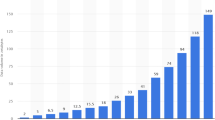Abstract
Cloud computing, which is amidst the new approaching fields of computers. There is a boom of this technology at present which can be easily seen as every organization outsource for most resources. As everyday life is known as, ranging from business applications to commercial functions, from students to professionals, the Cloud is giving uncountable advantages to users. Organizations often have concerns about the migration and utilization of cloud computing due to the loss of control over their outsourced resources, and cloud computing is vulnerable to risks. As per financial aspects, persons move to the cloud area because of their works, but security and privacy for data remain to be questionable. Hiding information related to trade and business bargains is utmost important as it might give a substantial profit or loss as the critical information may go too wrong hands. This paper focuses on the risk management frameworks for cloud computing and to the comparison between them to determine the strengths and weakness of each techniques. The proposed system deployed trust evaluation model in different conditions to reduce the complex evaluation procedures, while a substantial improvement recorded with the consideration of risk assessment.











Similar content being viewed by others
References
Abbadi, I. M., & Alwaneh, M. (2012). A framework for establishing trust in cloud. Elsevier Computers and Electrical Engineering, 3, 1073–1087.
Aljazzaf, Z., Carpretz, A., & Perry, M. (2011). Trust bootstrapping services and service providers. In Proceedings of 9th annual international conference on privacy, security and trust, PST (no. 3, pp. 7–15).
Amir, M. T., Rodziah, R., & Masrah, A. A. (2015). Towards a comprehensive security framework of cloud data storage based on multi-agent system architecture. Journal of Information Security, 10(1), 118–131.
Jøsang, A. (2001). A logic for uncertain probabilities. International Journal of uncertainty, Fuzziness and Knowledge-Based Systems, 9(03), 279–311.
Chunsheng, Z., Hasen, N., Victor, C. L., & Laurence, T. Y. (2015). An authenticated trust and reputation calculation and management system for cloud and sensor networks integration. IEEE Transactions on Information Forensics and Security.
CSA. (2015). Cloud adoption practices and priorities survey report. Cloud Security Alliance, 39(1).
CSA. (2014). Cloud usage: Risks and opportunities report. Cloud Security Alliance.
Daskalakis, C., Goldberg, P., & Papadimitriou, C. (2009). The complexity of computing Nash euilibrium. SIAM Journal on computing, 29(1), 195–259.
Datacenter knowledge. (2015). Archives. Retrieved from DATA Centre Knowledge. www.datacentreknowledge.com/archives/2015/06/19/seven-worstcloud-outages-of-2015so-far/.
David, K. (1998). Choice under partial uncertainty. International Economic Review, 34, 297–308.
Malar, E., & Gauthaam, M. (2020). Wavelet analysis of EEG for the identification of alcoholics using probabilistic classifiers and neural networks. International Journal of Intelligence and Sustainable Computing, 1(1), 3.
Bertino, E. (2014). A roadmap for privacy-enhanced secure data provenance. Journal of Intelligent Information Systems, 43(3), 481–501.
Gokulnath, K., & Rhymend, U. (2014). Fair-trust evaluation approach for cloud environment. Communications in Computer and Information Science, 2995, 81–91.
Imad, M. A., & Muntaha, A. (2012). A framework for establishing trust in the cloud. Computers and Electrical engineering', 14(2), 1073–1087.
Ishmanov, K., & Kim, S. (2014). A secure trust establishment in wireless sensor networks. In International conference on electrical engineering and informatics (ICEEI) (pp. 154–162).
Josang, A., & Lo, P. (2004). Analyzing the relationship between risk and trust in trust management. Lecture Notes in Computer Science, 11(4), 135–145.
Kannan, G., & Prasant, M. (2012). Trust computations and trust dynamics in mobile adhoc networks: A survey. IEEE Communications Surveys and Tutorials, 36(1), 279–298.
Lin, G., Wang, D., Bie, Y., & Lei, M. (2014). MTBAC: A mutual trust based access control model in Cloud computing. China Communications, 11(4), 154–162.
Ko, R., Jagadramana, P., Mowbray, M., Pearson, S., Kirchberg, M., & Liang, Q. (2011). Trust cloud: A frame for accountability and trust in cloud computing (pp. 4–9). Washington: World Congress on Services, IEEE.
Krantz, S. (1999). Jensen's Inequality. In Handbook of complex variables (p. 118). Boston: Birkhauser.
Selvaraj, J., & Mohammed, A. S. (2020). Mutation-based PSO techniques for optimal location and parameter settings of STATCOM under generator contingency. International Journal of Intelligence and Sustainable Computing, 1(1), 53.
Liu, F., Tong, J., Mao, J., Bohn, R., Messina, J., Badger, L., & Leaf, D. (2011). NIST cloud computing reference architecture. NIST Special Publication (pp. 13–14), 500–292.
Author information
Authors and Affiliations
Corresponding author
Additional information
Publisher's Note
Springer Nature remains neutral with regard to jurisdictional claims in published maps and institutional affiliations.
Rights and permissions
About this article
Cite this article
Gopalakrishnan, S., Alli, P. Trust Based Approach and Risk Management for IT Systems in Cloud Service Selection. Wireless Pers Commun 117, 3109–3127 (2021). https://doi.org/10.1007/s11277-020-07796-z
Published:
Issue Date:
DOI: https://doi.org/10.1007/s11277-020-07796-z




